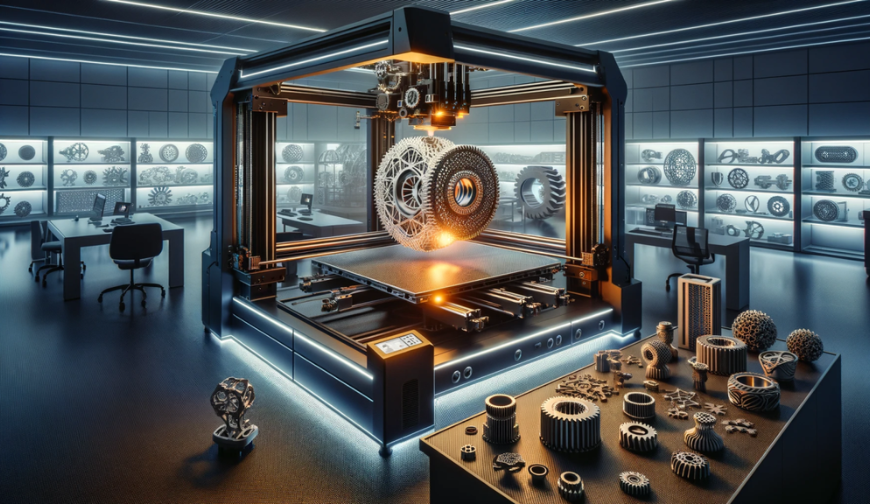In recent years, 3D printing has emerged as a groundbreaking technology revolutionizing the manufacturing landscape. Unlike traditional subtractive manufacturing methods, which involve cutting away material from a solid block, 3D printing, also known as additive manufacturing, builds objects layer by layer from digital designs. This innovation has opened doors to unprecedented possibilities across various industries.
The Evolution of Manufacturing
Traditional manufacturing methods, while effective, often come with limitations such as high costs, long lead times, and constraints in design complexity. 3D printing offers a paradigm shift by enabling the production of intricate designs with greater efficiency and flexibility.
How 3D Printing Works
At the core of 3D printing lies the additive manufacturing process, where materials are deposited layer by layer according to a digital model. This process allows for the creation of complex geometries that would be difficult or impossible to achieve through traditional means. Various materials such as plastics, metals, ceramics, and even food can be used in 3D printing, offering versatility in application.
Applications of 3D Printing
The versatility of 3D printing extends across a wide range of industries. In the automotive sector, companies utilize 3D printing for prototyping, custom parts, and even the production of entire vehicles. In healthcare, 3D printing has revolutionized patient care through the creation of custom implants, prosthetics, and anatomical models. Similarly, the aerospace industry leverages 3D printing for lightweight components and rapid prototyping.
Advantages of 3D Printing
One of the key advantages of 3D printing is its ability to enable customization and personalization on a mass scale. Whether it’s tailored medical devices or personalized consumer products, 3D printing offers unparalleled flexibility. Additionally, 3D printing facilitates rapid prototyping, allowing companies to iterate designs quickly and cost-effectively.
Challenges and Limitations
Despite its numerous benefits, 3D printing also faces challenges such as material limitations, speed, and scalability issues. Moreover, intellectual property concerns surrounding digital designs pose legal challenges that need to be addressed.
Future Trends in 3D Printing
Advancements in 3D printing technology continue to push boundaries, with innovations such as multi-material printing and hybrid manufacturing gaining traction. Integration with other emerging technologies like artificial intelligence and robotics further enhances the capabilities of 3D printing.
Impact on Global Economy
The widespread adoption of 3D printing is reshaping the global economy by creating new job opportunities and disrupting traditional manufacturing processes. While some industries may face displacement, the overall impact is expected to be positive, driving innovation and economic growth.
Environmental Sustainability
3D printing offers environmental benefits by reducing waste through on-demand production and optimizing material usage. Additionally, advancements in recycling and biodegradable materials contribute to the sustainability of 3D printing processes.
Education and Innovation
Integrating 3D printing into educational curriculums equips students with valuable skills in design, engineering, and problem-solving. Encouraging innovation and entrepreneurship in the field of 3D printing fosters a culture of creativity and ingenuity.
Regulatory Framework and Standards
As 3D printing technology matures, regulatory frameworks and standards are evolving to address safety, quality, and ethical considerations. Establishing clear guidelines is crucial to ensuring the responsible use of 3D printing technology.
Case Studies
Numerous success stories demonstrate the transformative impact of 3D printing across industries. From customized medical implants to sustainable architectural designs, 3D printing continues to push the boundaries of what’s possible.
Ethical Considerations
As with any emerging technology, 3D printing raises ethical concerns regarding privacy, security, and fair use. Safeguarding intellectual property rights and ensuring ethical practices are paramount to building trust and credibility in the industry.
Public Perception and Acceptance
Raising awareness and educating the public about the capabilities and benefits of 3D printing is essential for widespread acceptance. Addressing skepticism and misconceptions can foster greater confidence in the technology’s potential.
Conclusion
In conclusion, 3D printing stands at the forefront of innovation, revolutionizing manufacturing with its cutting-edge capabilities. From custom-designed products to sustainable solutions, the impact of 3D printing is profound and far-reaching. As technology continues to evolve, the future of manufacturing looks brighter than ever.
Unique FAQs
- Is 3D printing cost-effective for small businesses?
- Yes, 3D printing can be cost-effective for small businesses, especially for prototyping and custom manufacturing.
- What materials can be used in 3D printing?
- A wide range of materials can be used in 3D printing, including plastics, metals, ceramics, and even organic materials like food.
- How fast is the 3D printing process?
- The speed of 3D printing varies depending on factors such as the complexity of the design, the type of printer used, and the material being printed.
- Are there any safety concerns associated with 3D printing?
- While 3D printing is generally safe when used properly, certain materials and processes may pose health and safety risks. It’s important to follow safety guidelines and use appropriate protective equipment.
- What role does 3D printing play in sustainability?
- 3D printing contributes to sustainability by reducing waste through on-demand production, optimizing material usage, and enabling the use of recycled and biodegradable materials.
